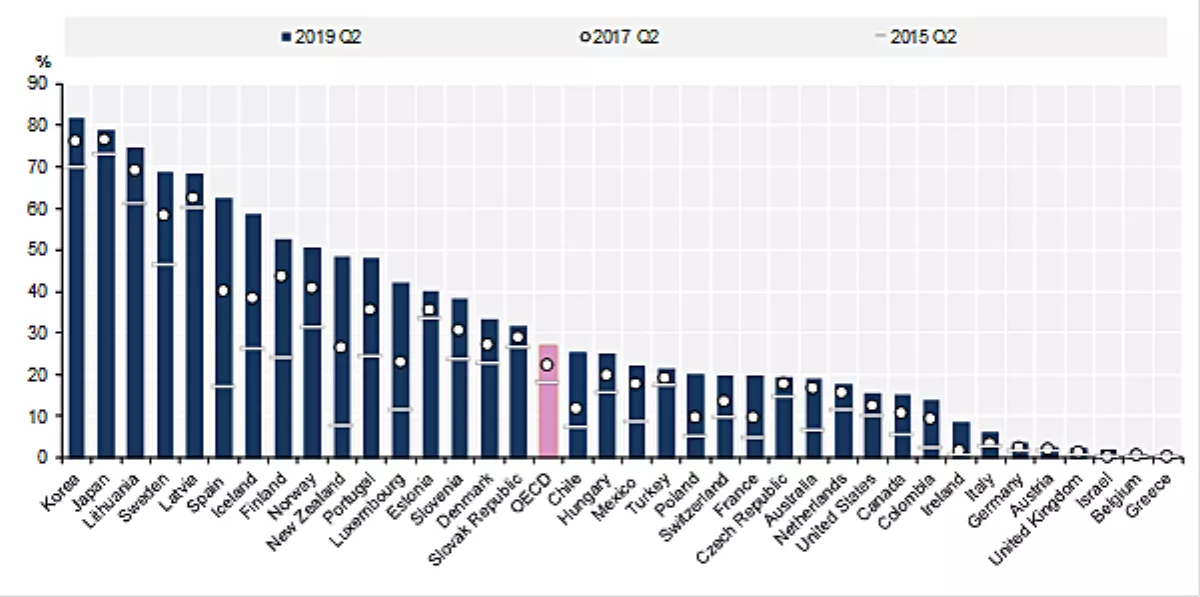
High-speed fibre now makes up half of fixed Internet in nine OECD countries
High-speed fibre internet now makes up 50% of more of the internet connections in OECD countries including Japan and Korea, with countries such as New Zealand not too far behind.
That's according to the latest statistics from the OECD's broadband portal, which analysed and ranked 37 countries' broadband access.
Overall, fibre broadband connections have increased 3% from 24% to 27% in the space of one year, indicating that it is still a slow process for many countries.
Korea and Japan boast a fibre broadband share of more than 75%, followed by Lithuania, Sweden and Latvia rounding out the top five.
New Zealand fibre broadband uptake sits at just below 50%, while Australia's uptake is much slower at less than 20%.
Countries including Greece, Belgium, Israel, Austria, and even the United Kingdom have a less than 5% adoption uptake.
In places such as India, where broadband uptake remains low, government intervention aims to boost uptake and the economy. India expects to create a digitally-enabled economy worth 5 trillion dollars.
The Indian Government's National Broadband Mission aims to provide broadband access to all villages across the country by 2022, with the aim of growing communications infrastructure, eliminating the digital divide, and providing affordable broadband access to citizens.
The project will require the laying down of fibre optic cables and more towers to improve the quality of mobile and internet services.
OECD statistics also address alternative forms of connections in addition to fibre.
Cable remains stable with a slight increase of 4.3% in the year to 30 June 2019 and accounts for a significant 33.6% of all fixed broadband connections, according to the OECD.
Meanwhile, DSL connections are slowly being displaced by fibre connections. Its share has dropped from 41.6% to 35.1% in two years.
In terms of fixed broadband subscriptions, Switzerland, France, Denmark, the Netherlands and Korea have the highest penetration.
Mobile broadband uptake is growing strongly, particularly in countries such as Japan, Finland, Estonia, the United States, and Australia. Australia boasts a 144% penetration rate while the global growth rate is approximately 7% per year.
The OECD also analysed machine-to-machine (M2M) SIM cards, which are growing at the highest rate (30%) of all analysed connections.
The leading countries are Sweden with 140.6 M2M SIM cards per 100 inhabitants, followed by Austria, Italy, the United States and the Netherlands. The high number of M2M SIM cards provided by Sweden is due in part to the use of these SIM cards in other countries by a Swedish operator.


